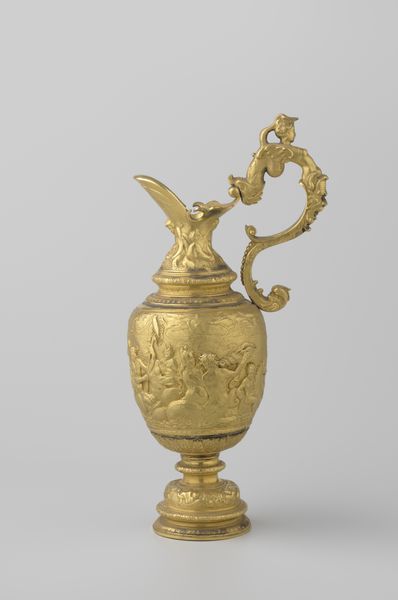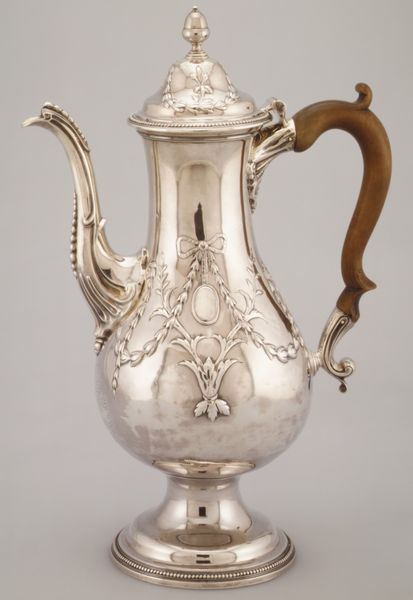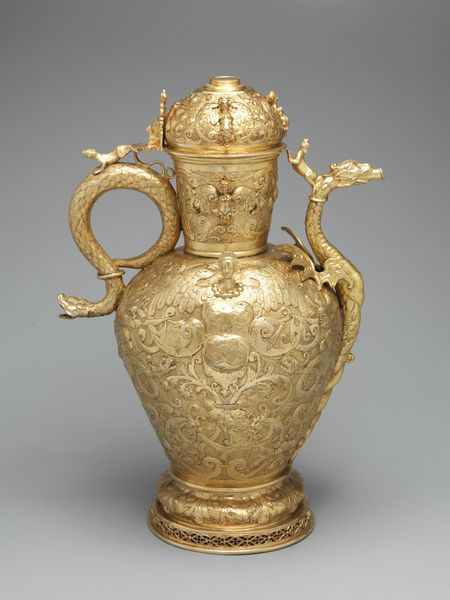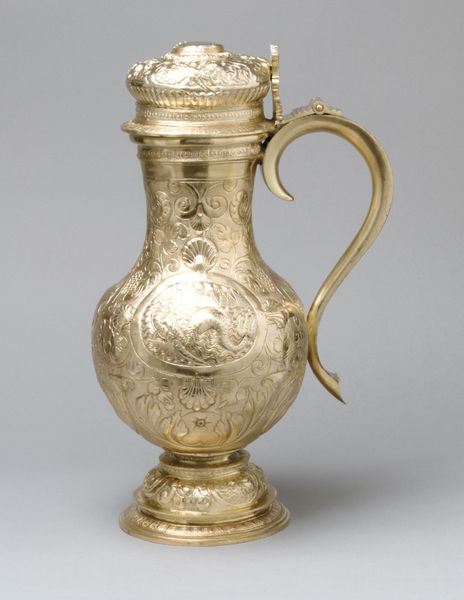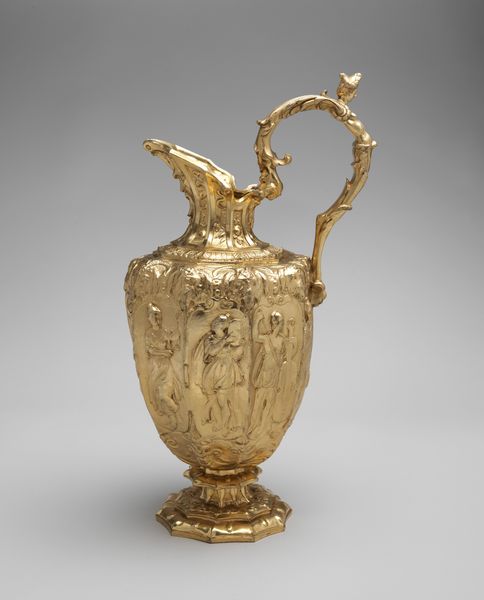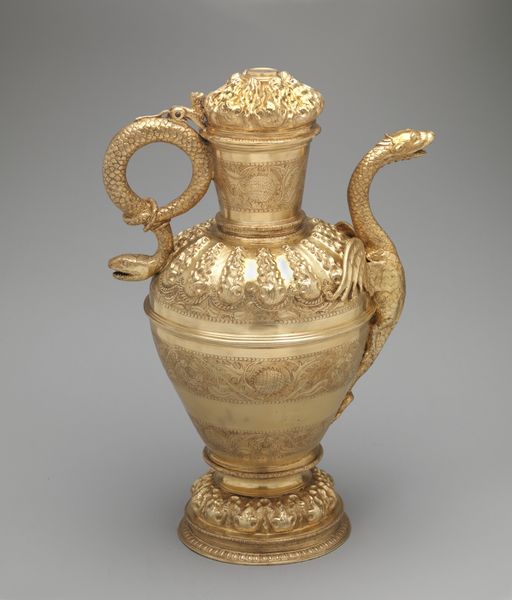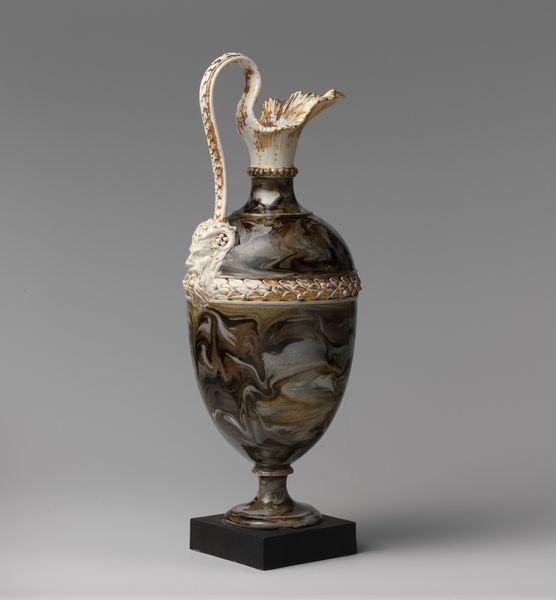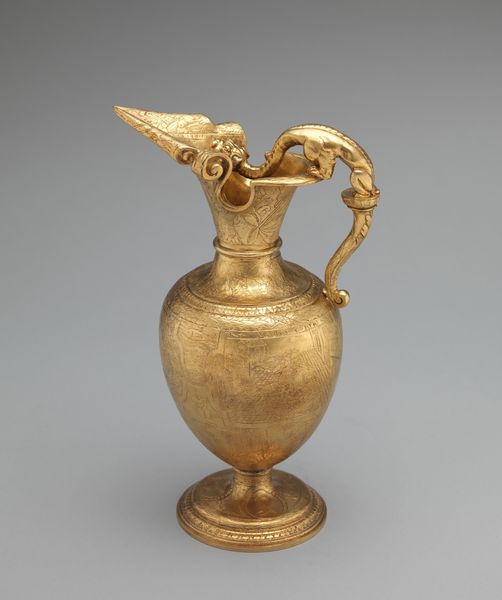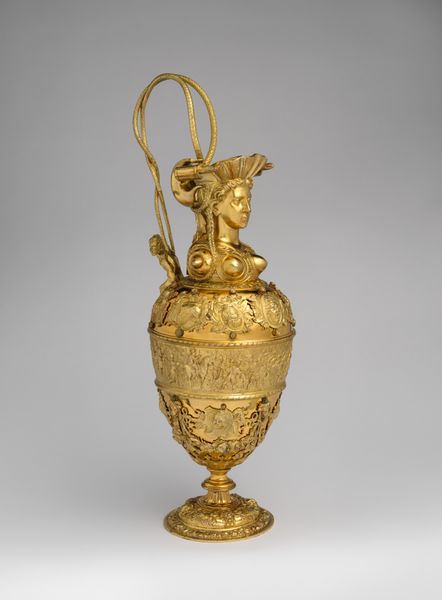
Galvanoplastische reproductie van een kan met voorstelling van de Doop van Christus 1881
0:00
0:00
silver, metal, sculpture
#
silver
#
metal
#
sculpture
Dimensions: height 34.5 cm, width 20.0 cm, weight 1000 gr
Copyright: Rijks Museum: Open Domain
Editor: Right, next up we have what is described as a "Galvanoplastische reproductie van een kan met voorstelling van de Doop van Christus" - which Google tells me is something like "Electroplastic reproduction of a jug with a depiction of the Baptism of Christ". It was made in 1881 by Elkington & Co., using silver and other metals. My first impression is of real opulence - it's incredibly ornate. What jumps out at you? Curator: Opulence indeed! It’s dripping with it, isn’t it? More than just a pretty jug, though. Look closely at the reproductive process here. “Galvanoplastische reproductie”… It’s mimicking something older, grander, probably unique. This isn’t about function so much as aspiration. Who would have owned this? And what did owning a *copy* signify? Editor: So, you’re saying the act of reproduction is itself meaningful? A kind of… status symbol? Curator: Precisely. It's democratizing the aesthetic of the ultra-rich, making a *version* of luxury available to a wider audience. Think about it: you get the visual splendor without, perhaps, the precious metals of the original. But then there's a bit of… what's the word... "fakeness" to it. Is it admirable or somehow…deceptive? Editor: Hmmm. Interesting point. It certainly complicates my initial “wow, shiny!” reaction. Knowing that it’s a copy makes me see it differently – maybe even question the value we place on authenticity. Curator: Exactly! And that tension, that space between original and copy, high art and industrial production, is where the real conversation starts. Editor: So, a jug prompts a meditation on value. Who knew? Thanks for the perspective! Curator: My pleasure. It’s a shiny object lesson in the art of seeing.
Comments
No comments
Be the first to comment and join the conversation on the ultimate creative platform.
